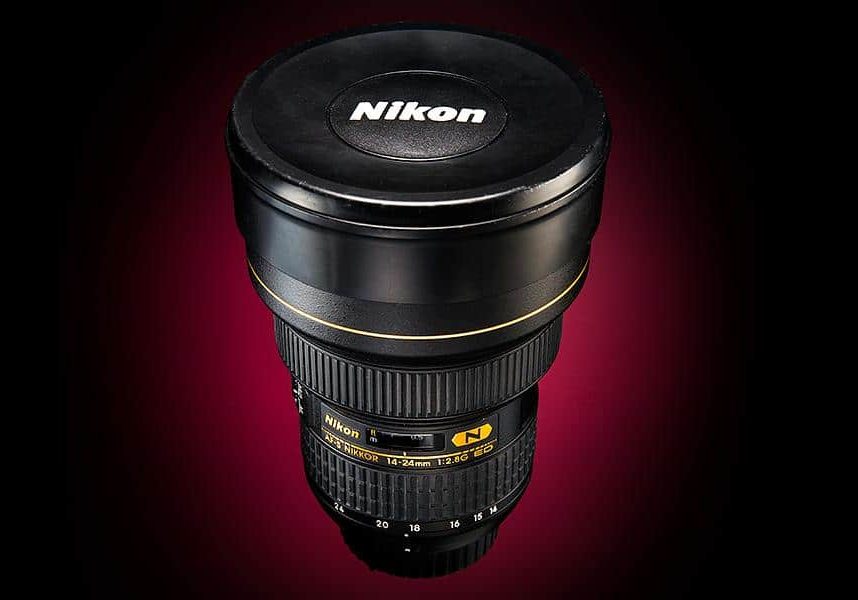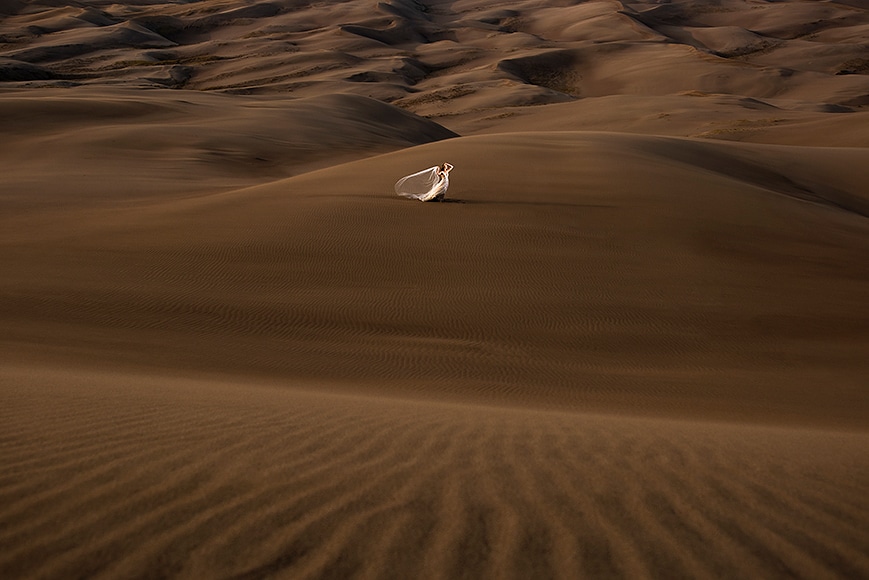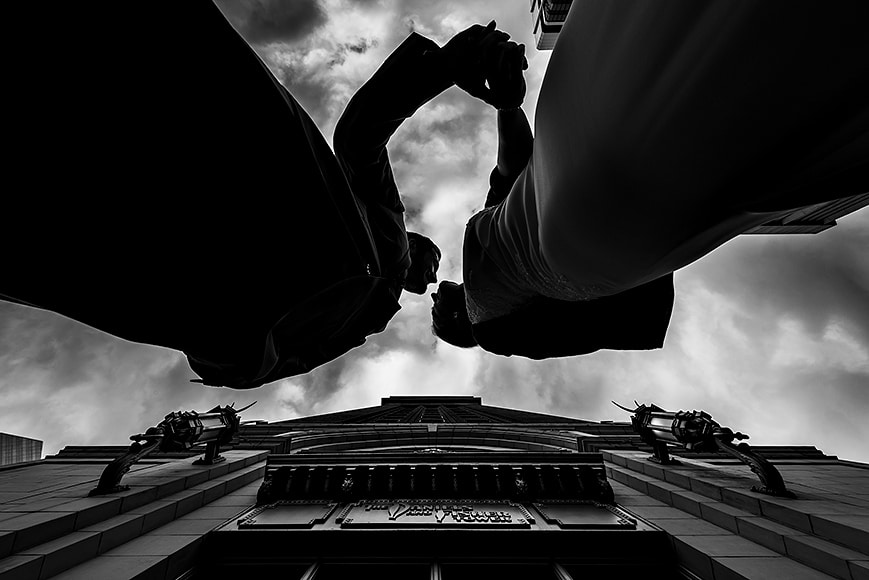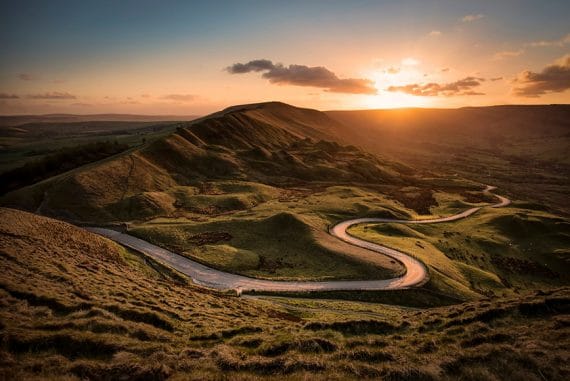
Nikon 14-24mm f/2.8 G Wide Angle Lens Review
A Nikon 14-24mm f/2.8 G review by a professional wedding photographer. Find out why it's the most unique wide angle lens for immersive portrait photography.
This is a guest review of the Nikon 14-24mm f/2.8 G wide angle zoom lens by wedding photographer Jesse La Plante.
“Get high, get low, get close, get far.” This was one of the best pieces of photography advice I received in college and it’s stuck with me ever since.
Any time I find myself in a creative rut, I remember these words and I’m usually able to bounce back pretty quickly… but I might add one more component to that adage: “get wide.”
As a wedding photographer, I shoot with my trusty Nikon 24-70mm f/2.8G around ninety percent of the time. If I could choose only one Nikon lens, this would have to be it.
That said, sometimes I need just a little extra creative juice, and in these situations I frequently find myself switching over to the Nikon 14-24mm f/2.8G.
Nikon 14-24mm f/2.8G Review | What’s it for?
Obviously, 14mm is a highly specialized focal length. So in which situations might a wedding photographer decide to shoot ultra wide?
The most obvious example would be when incorporating sweeping mountain vistas, tall city buildings, the night sky, etc.
A 14mm lens is a wonderful tool to give your images a sense of place and effectively display the bride and groom within the context of the surrounding environs.
But there are a few other times I find myself incorporating this focal length length as well.
For example, I’ll occasionally bust out the Nikon 14-24mm f/2.8G during the dance party when people are going crazy and limbs are flying everywhere. The manner in which this focal length distorts the scene makes everything feel a bit more dynamic and uncanny.
Watch any Terry Gilliam film (The Fisher King, 12 Monkeys, Fear and Loathing in Las Vegas, etc.) and you’ll see that almost every shot is a wide shot, which gives the work a striking sense of otherworldliness.
Another benefit of this focal length is stealth. One of the biggest challenges a wedding photographer faces is working unnoticed. There are a ton of great candid moments throughout the wedding day, but it’s human nature to clam up when someone points a camera at you.
At 14mm, however, you’re capturing a far greater field of view than it seems to the casual observer. This means you can shoot one thing while actually pointing your camera at another.

Nikon D800 + Nikkor 14-24mm f/2.8G | 1/1000th, f/13, ISO 100
Finally, who needs a drone when you have long arms and a 14mm lens? I’m mostly joking here, but it does work in a pinch when you need to capture a bird’s eye view in a “no-fly” zone, as in the image above.
Nikon 14-24mm f/2.8G | Overview & Specs

The Nikon 14-24mm f/2.8G is considered to be Nikon’s flagship wide-angle lens. It’s an FX lens (Nikon speech for full frame) with a constant f/2.8 aperture, extra-low dispersion glass elements (for better sharpness and reduced chromatic aberration), silent wave focusing motor, nano crystal coating, weather sealing, and so on and so forth.
I’m not going to waste your time with a comprehensive list of technical jargon here, but if you’re interested, head on over to Nikon’s website for the skinny.
Build Quality & Ergonomics

The unusual lens cap of the Nikkor 14-24mm f/2.8G
This lens is basically a brick. Weighing in at just over two pounds, it feels like you could chuck it through a window and keep on shooting. Not that I recommend doing that.
Some might consider the weight and bulk of the Nikon 14-24mm f/2.8G to be a bit of a hindrance, especially when lugging it around in a camera bag, but I for one prefer a bit of heft when shooting. It just feels right in my hands.
The one thing I’m not a huge fan of is the front glass element. It’s not flat like the rest of the Nikon line, but rather a bulbous protrusion that extends outward toward the front of the built-in lens hood.
This tends to make me a bit nervous when walking around without the lens cap on because the shape of the glass prohibits the attachment of a protective filter.
All of my other lenses have a UV filter permanently attached for protection, but not this guy. More on filters a bit later.
Finally, the lens cap is a bit unorthodox. There have been a lot of complaints about it across the interwebs, but I actually kind of like it.
Instead of clicking into the tiny groves near the lens’s filter threads, the Nikon 14-24mm f/2.8G’s lens cap slides over the entire front end of the lens like a glove.
My only issue with it is that it’s too thick to quickly slip into my pocket, so I periodically find myself tossing it on the ground when working with a time crunch. This means that dust and dirt can wind up on the lens, but nothing a good air blower can’t remedy.
Auto Focus

Nikon D800 + Nikkor 14-24mm f/2.8G | 1/80th, f/3.5, ISO 1600
In low light, this is easily the fastest-focusing and consistently accurate lens in my arsenal.
Of course, this is probably due in part to the nature of a wide-angle lens, in that it’s more forgiving than telephoto when focus is slightly off.
That said, after every wedding shoot, the images taken with my Nikon 14-24mm f/2.8G are more consistently in focus than the images from any of my other lenses.
Plus, this lens does far less “searching” when shooting in low light than I’m used to with other lenses.
I’m not sure exactly how the SWM (silent wave motor) works, other than it having something to do with “traveling waves” and “rotational energy,” but man, it sure does the trick.
Sharpness

Nikon D800 + Nikkor 14-24mm f/2.8G | 1/400th, f/8, ISO 250
This lens is razor sharp. Heck, it’s even sharper than some of my primes. Of course, the corners suffer a bit when shooting wide open, but that’s to be expected. Plus, if you’re shooting weddings, who cares?
To me, it’s the so-called imperfections that give a lens character.
And if you’re doing high-end architectural or real estate photography where edge to edge sharpness is crucial, this isn’t the lens for you anyway.
Here’s a 100% crop example from the photo above to give you a better idea of how sharp the Nikon 14-24mm f/2.8G is.

Distortion
Barrel distortion (in which straight lines appear as convex curves) is an inherent issue with all wide-angle lenses. The Nikon 14-24mm f/2.8G is no exception.
Again, if you’re an architectural photographer, this will present a problem. If you’re a wedding photographer, it’s just one more eccentricity that you can incorporate in your style.
But if it really bothers you, you can always just zoom in a little and/or fix it in Photoshop or Lightroom.
Vignetting
Also like all wide-angle lenses, the Nikon 14-24mm f/2.8G exhibits some vignetting, especially when shooting wide open.
To me, this is a non-issue because 1) it’s easily correctable in post and 2) I kind of like a little vignetting in my images.
Flare/Ghosting

Nikon D800 + Nikkor 14-24mm f/2.8G | 1/100th, f/2.8, ISO 2000
This is one of my only gripes about this lens. If there’s a hard light source within the frame, or even anywhere near the edge of the frame, you’re probably going to see some artifacts in your image.
This can usually be corrected in post, unless the artifacts appear somewhere important (e.g. right over your bride’s face), so you have to be cognizant of it while shooting.
The best solution (other than adjusting your shooting angle relative to the light source) is to zoom the lens in slightly.
As you zoom the lens, the protruding front glass element withdraws back into the lens barrel, limiting the amount of light landing directly on the glass.
Bokeh
It’s a wide-angle lens. ‘Nuff said.
Nikon 14-24mm f/2.8 G Sample Images
Check out these sample images taken with the Nikon 14-24mm f/2.8 G.










Accessories

The bulbous front element of the Nikkor 14-24mm f/2.8G may pose problems if you’re a frequent filter user.
The Nikon 14-24mm f/2.8G comes with the same case (CL-M3) as the Nikon 24-70mm f/2.8G. It’s a nice, rugged case with plenty of padding and an attachable shoulder strap.
That said, I can’t imagine myself ever carrying a bunch of lenses in separate cases, but it sure does look nice on the shelf!
I mentioned the unconventional lens cap earlier. It’s sort of like a glove that fits over the entire front of the lens, hood and all. I dig it.
Due to the protruding front glass element, you can’t attach traditional filters. If you want to use filters, you’ll have to purchase a third party apparatus.
If you’re a professional landscape photographer, this will probably be worth the investment.. but for me as a wedding photographer, I can’t justify the hassle.
Nikon 14-24mm f/2.8G Review | Conclusion
The Nikon 14-24mm f/2.8G is a specialty lens meant for special shooting situations.
Does it have some quirks? Absolutely. But much like a wedding itself, it’s the eccentricities that make it unique. And if you’re willing to roll with the punches, you’ll capture truly outstanding images.
This shouldn’t be your first lens. Or even your second or third. But once you feel as if your creativity is starting to outgrow the confines of your gear, you might consider adding an ultra wide lens to your arsenal.
And if you shoot Nikon, look no further than the Nikon 14-24mm f/2.8G.















It’s strange that you say this isn’t the lens for you for high-end architectural or real estate photography, but is one of the most recommended lenses on sites dedicated for that pursuit.
I don’t use mine a lot, but when I need it I have it and sometimes it is just the tool for the task.
I agree completely about the heft. I like a heavier camera. Heck, my F5 is one of my favorite cameras. I haven’t had the 14-24 long, but it was love at first shot.
I bought this lens two years ago, and my 14-24 has become one of my favourite Nikon lenses. It’s great for interior and outdoor shoots, the overall quality is amazing. Fast focus, low distortion, sharpness… On the other side, there are more lightweight options, and you must handle with care due to the lack of protective filter.